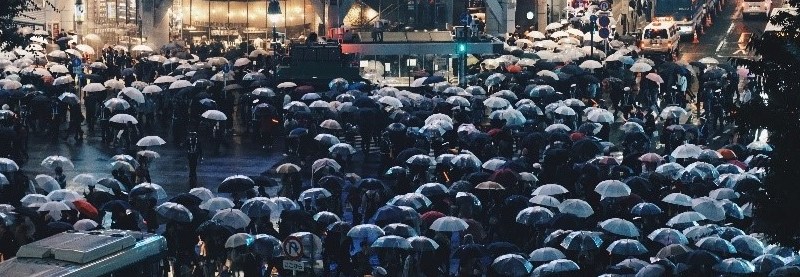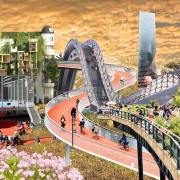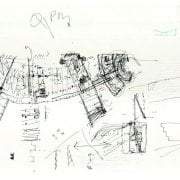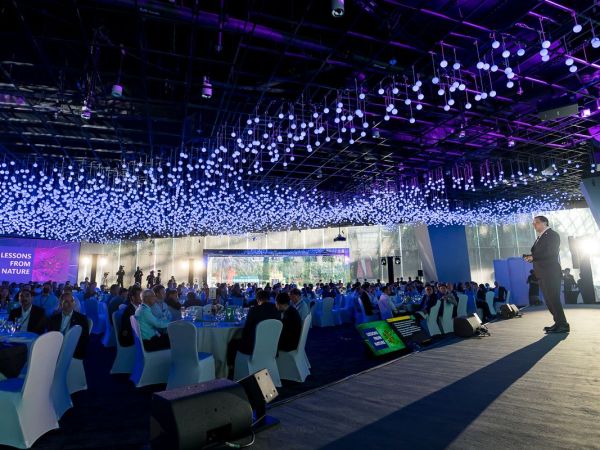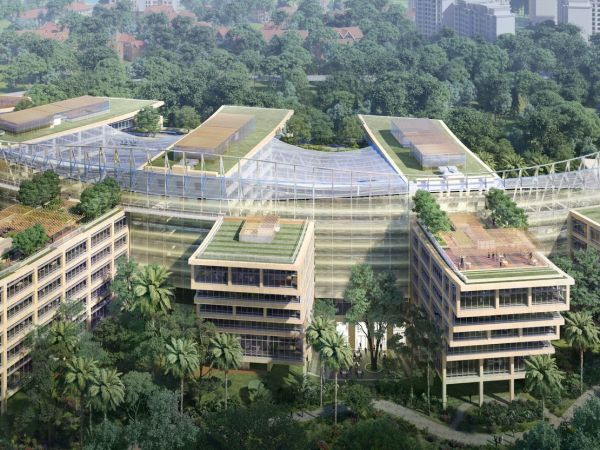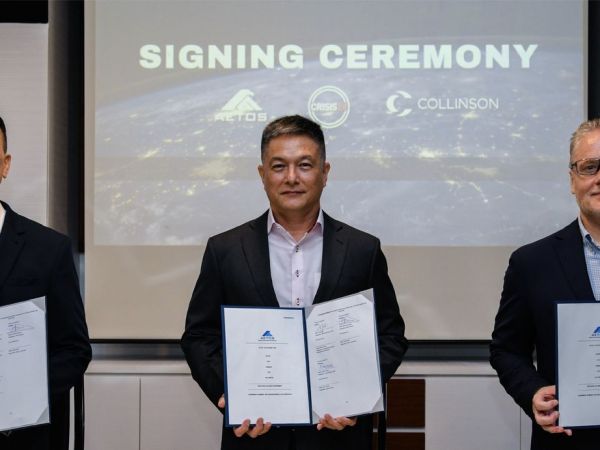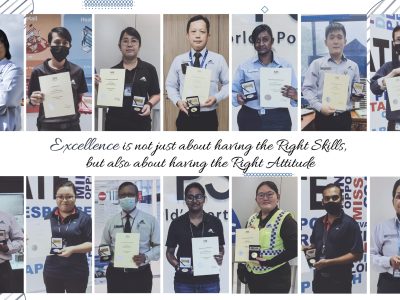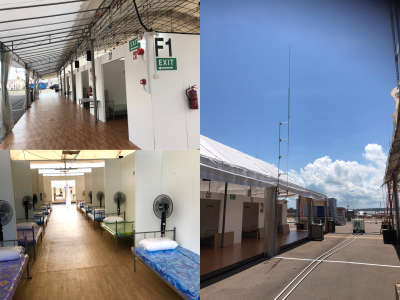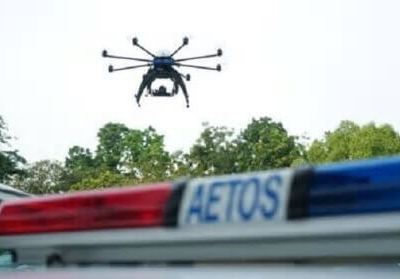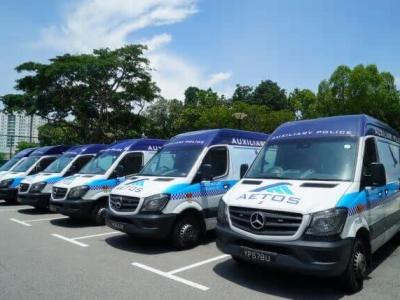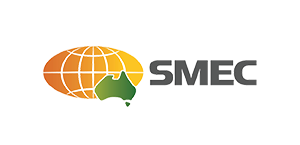As drinkable water becomes a rare and precious commodity, while parts of Planet Earth are faced with flood damage or severe drought, the demand for good resource planning and management will grow. Our experts from Surbana Jurong and SMEC weigh in on the troubling statistics many countries face, and share their experience in Singapore and Australia on how we can harness technology to keep the planet hydrated.
Waterworld – a case for the Smart Sponge City
By Joe Keen Poon, Managing Director (Smart City Solutions), Surbana Jurong
In 1995, Hollywood launched the movie Waterworld starring Kevin Costner. While the reception from the critics and at the box office was mixed, it made history as the most expensive movie ever made at that time.
When we fast forward 24 years to today and strip out the plot’s most exaggerated bits, three things from that movie stand out as eerily prophetic: floods and rising sea levels are menacing, drinkable water is getting scarce, and yes, water management today is big business.
Water, water everywhere, not a drop to drink
Proper resource planning and technology is not just good business, but good for mankind. By 2025, 1.8 billion people are expected to be living in countries or regions with absolute water scarcity (United Nation, 2014); by 2030, the number of people affected by river floods each year could increase from approximately 21 million people worldwide to 54 million, due to climate change and widespread urban development. (World Resources Institute, 2015).
Correspondingly, the demand for solutions is expected to drive the global water market, which is growing strongly and expected to be worth close to US$700 billion by 2018 (Global Water Intelligence)
Singapore is no stranger to these water concerns. With no natural water resources to call our own, we have been highly dependent on the import of raw water and natural storm water to fill our reservoirs. On the other hand, there was also flooding in the 1960s and 1970s that was common during heavy rains. Climatic changes in recent years also brought along the occasional flash flood.
Catch every drop, reuse every drop, and use every drop more than once
Over the last 50 years, Singapore’s water story has evolved significantly. Under the leadership of its national water agency, Public Utilities Board (PUB), Singapore’s society and industry has been largely successful in strengthening our water resilience. Postwar development saw Singapore expand its water imports from Malaysia and also from the building of its local reservoirs.
As technology improves, Singapore was able to drive an integrated water resources management approach and manage our water resources through our “Four National Taps” strategy:
- Collecting stormwater through a comprehensive network of water channels
- Purifying wastewater at our NEWater plants
- Importing water from our neighbour
- Using desalination plants to meet some water demands.
To develop flood resilience in coping with increasing weather uncertainties and urbanisation, Singapore adopts a multi-pronged approach, leveraging innovative engineering solutions and best practices: slowing down the water runoff during intense rains; expanding water channels to improve drainage infrastructure and increase flood protection; and introducing policies such as the “Code of Practice (COP) on Surface Water Drainage” for new developments.
Technology plays a key role along every step of the way. The picture of success is to “Catch every drop, reuse every drop, and use every drop more than once”.
Placed in a unique position of having to address both flooding and lack of water, Singapore’s experience in effectively addressing our water challenges has earned us international recognition as a model city for water management and an emerging global hydrohub. In the recently released “Sustainable Cities Water Index 2016” by Arcadis, Singapore was ranked 1st in Asia. It was noted in the report that “Singapore has made vast improvement over the past several decades to become a regional water hub …… despite its geographic vulnerability regarding flood risk and water reserves”. Our NEWater Program has also received the “Water for Life" Best Practices Award at UN World Water Day in March 2014 in Tokyo, Japan
Not just Singapore, but China, India and the Middle East too
From 1970- 2012, the world recorded nearly 8,835 water- and weather-related disasters. Storms and floods accounted for 79% of this number (World Metrological Organization 2014). With the rapid pace of urbanisation and fast-growing population (especially in countries such as China and India), low-lying coastal cities are more exposed to the losses associated with flooding.
These flood-prone areas could include coastal China, India (Kolkata, Mumbai and Surat), Egypt (Alexandria), Thailand (Bangkok), Bangladesh (Dhaka), Ecuador (Guayaquil), Vietnam (Hai Phong and Ho Chi Minh City), Indonesia (Jakarta), and United States of America (Miami).
On the other extreme, highly water-stressed countries (facing droughts) could potentially include those from the dry Middle East countries such as Bahrain, Israel, Kuwait, Oman, Lebanon, Palestine, Qatar, Saudi Arabia, United Arab Emirates, China’s interior regions, as well as the African continent’s Eritrea, Ethiopia, Morocco, Somalia, Sudan and Uganda. Droughts caused 35% of deaths from the almost 9,000 of the disasters stated above (World Metrological Organization 2014). These countries stand to benefit from the experiences of the likes of Singapore.
Smart supply, smart demand, smart sponge
Along the way, Surbana Jurong has been a supportive partner to PUB. As Asia’s consultancy powerhouse for urbanisation, industrial and infrastructure developments, we have a distinguished track record in shaping Singapore’s landscape over the last 50 years. We believe that the Smart Sponge City concept of leveraging on technology to aid in capturing and managing water will be important for the viability of many of the cities facing water stress or flooding.
Pilot sponge city projects in Beijing, Shanghai and Xinjiang have shown promising results in managing run-off water (China Water Risk May 2016). Advances in Smart City technologies enable us to design end-to-end solutions that span across the spectrum of water management holistically, where the designing, planning and managing of water demand and supply are fully integrated with relevant technological advances.
Catch every drop, reuse every drop, use every drop more than once, and now…analyse every drop
To have a viable Smart Sponge City solution, we need an “in a box” or coherent, ready-to-deploy solution that harnesses the power of technology. Together with other Singapore partners like Zweec, Hyflux and Netatech, we are well-equipped to go beyond urban planning and water & environmental engineering, to the harnessing of modelling, monitoring and analytics technologies.
This is where the Smart Sponge City differs from conventional water approaches. By using technology to weave together demand and supply, cities can “Catch every drop, reuse every drop, use every drop more than once, and now…analyse every drop”.
As IE Singapore Group Director Kow Juan Tiang stated, “Singapore’s journey towards water self-sustainability has spurred our companies to constantly innovate and develop effective water solutions…… We believe that Singapore companies are well placed to work with other cities on water issues.”
At the basic infrastructure layer, a sensor-based smart water operation can provide extensive visibility and situational awareness, resulting in improved decision-making, enhancing efficiency and reducing risk. A water efficiency analytic component helps to mitigate non-revenue water through pressure optimisation and pipe failure prediction.
As more data becomes available, insights can be delivered from big data to help operators improve irrigation, flood management and sewer overflows. Lastly, it is important to enhance user engagement and allow information to be made accessible. This can be achieved via visualisation techniques of the water consumption data.
Humanity is moving into uncharted waters with the speed and scale of urbanisation. We are reaching a fork road where one path leads to the apocalyptic vision set out in Waterworld, and the other the survival of the world as we know it. We believe that the combination of proper urban planning and technology will help us stay on the right path.

How data helps in water management
Below is an excerpt from the article “Powering the water sector using smart technology” by Mr Bob Tilbury, Market Director (Water & Environment), SMEC (a member of the Surbana Jurong Group):
Novel ways to capture and interpret data
Remote data capture is already embedded within the engineering community across the board and particularly within the hydropower, dams and water sector.
We move across various spectrums of technology – from aerial photography, to drones, LIDAR, 3D scanning and multiple forms of remote capture that acquire a broad data scope. The team focuses on cross-examining the data, and importantly, aims to capitalise the depth and richness of the data in different ways. A great example of this is how we manage both the collection and interpretation of data from drones.
While we are accustomed to using drones for project images and videos, our requirements have also advanced at a rapid pace. Often, there is significant cost and time involved, and limitations on how much data a person can collect within a certain amount of time. Now we are starting to use drones in confined spaces, inside a reservoir, pipeline, manholes, pits and places which potentially pose danger to people.
The role of the engineer has also shifted in how he uses technology in a much more interactive and effective way, to increase the quality of data captured – including real-time capabilities.
Back in the office, we use smart automation to connect multiple data sources and analyse the results. The data interpretation is complex and operators still require a solid technical background to understand how to analyse the data.
Driving innovation through big data analytics
It is possible to capture large data sets from clients over several years of asset monitoring. We utilise “unguided analytics” – finding patterns in the data without any technical preconceptions – to extract valuable insights, and then leverage on our technical experience to understand and apply those patterns.
This is a process which has been applied recently with Queensland Urban Utilities (QUU), one of the largest water distributor-retailers in Australia – supplying drinking water, recycled water and sewerage services to a population of more than 1.4 million in South East Queensland. The SMEC team did some unguided analytics on the work order history of sewage pump station assets (such as requests for repairs, replacement and other works) as part of the “Enhanced Condition Assessment Programme”.
The analytic plots revealed patterns and trends in the dataset which allowed QUU to make informed decisions on how to prioritise their maintenance efforts, future budgets and reduce the operational risk of assets (i.e. assets which are causing the most outages/disruptions, and then targeting them for future maintenance strategies). We were able to pull trends from the data results and confidently engage QUU with data driven recommendations to improve maintenance operations across their asset portfolio.
Championing VR/AR
The SMEC team also recently completed a 3D scanning project in the galleries of a wastewater treatment plant for South Australia Water. This project involved areas which were difficult to access by conventional means. The team produced a 3D model of the galleries which was used as an important resource for the design of key remediation works.
In addition to producing the 3D design, SMEC has championed virtual and augmented reality (VR/AR) in the built environment. Other civil engineering and water infrastructure projects include the iconic Snowy 2.0 project, a proposed pumped-hydro expansion of the Snowy Mountains (New South Wales) Scheme which will supercharge its existing hydro-electric generation and large-scale storage capabilities. Here, we utilised VR construction visualisation. Additionally, we have transformed the design into an animated construction sequence where we can see how the project will actually be constructed.
Technology’s role in water security
A recent online article in Create magazine written by my SMEC colleague Jonathan Kent outlines how Australia is increasingly adopting dams and engineered water storage. He described how other more high-tech and expensive technologies such as desalination have been installed to provide increased water security to major urban areas. I agree that providing water security to the driest and most in-need areas is the most challenging issue to overcome, especially when urbanisation of major coastal centres continues.
The SMEC team is providing expertise to address the issue, and we are working with Water New South Wales (NSW) on the implementation of the Wentworth to Broken Hill Water Supply Project, which will provide greater water security to regional NSW.
Read the full article here at Perspectives, Surbana Jurong’s thought leadership platform.


